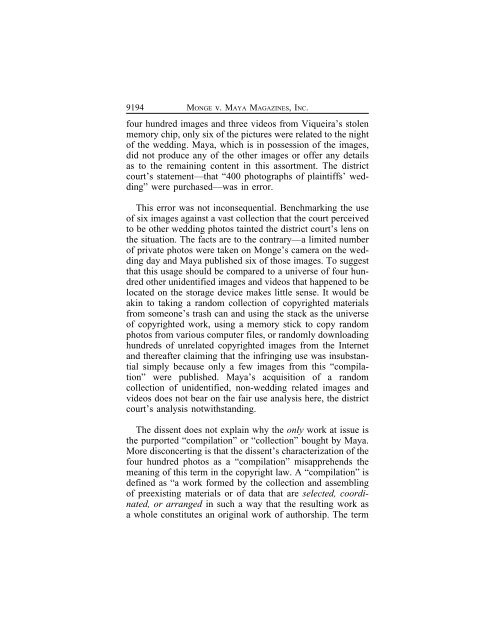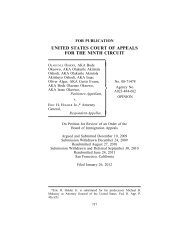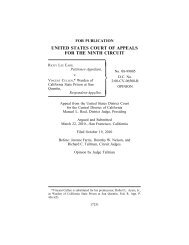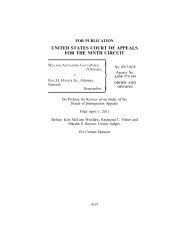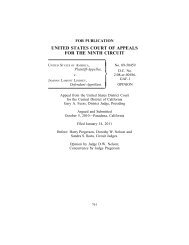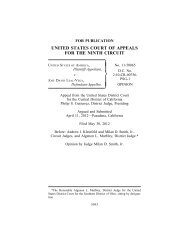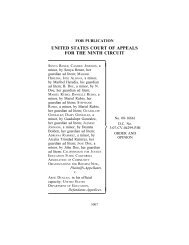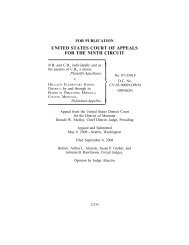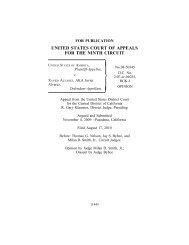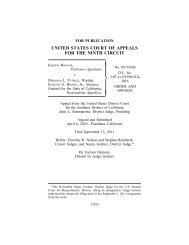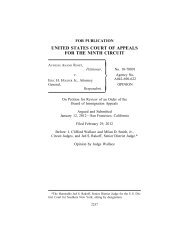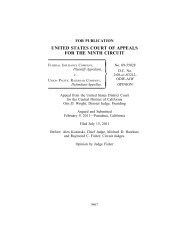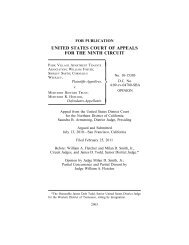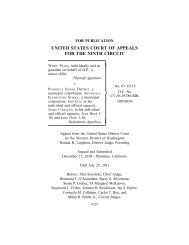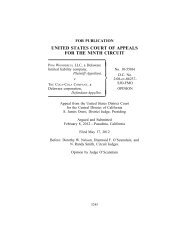NOELIA MONGE V. MAYA MAGAZINES, INC. - Ninth Circuit Court of ...
NOELIA MONGE V. MAYA MAGAZINES, INC. - Ninth Circuit Court of ...
NOELIA MONGE V. MAYA MAGAZINES, INC. - Ninth Circuit Court of ...
Create successful ePaper yourself
Turn your PDF publications into a flip-book with our unique Google optimized e-Paper software.
9194 <strong>MONGE</strong> v. <strong>MAYA</strong> <strong>MAGAZINES</strong>, <strong>INC</strong>.<br />
four hundred images and three videos from Viqueira’s stolen<br />
memory chip, only six <strong>of</strong> the pictures were related to the night<br />
<strong>of</strong> the wedding. Maya, which is in possession <strong>of</strong> the images,<br />
did not produce any <strong>of</strong> the other images or <strong>of</strong>fer any details<br />
as to the remaining content in this assortment. The district<br />
court’s statement—that “400 photographs <strong>of</strong> plaintiffs’ wedding”<br />
were purchased—was in error.<br />
This error was not inconsequential. Benchmarking the use<br />
<strong>of</strong> six images against a vast collection that the court perceived<br />
to be other wedding photos tainted the district court’s lens on<br />
the situation. The facts are to the contrary—a limited number<br />
<strong>of</strong> private photos were taken on Monge’s camera on the wedding<br />
day and Maya published six <strong>of</strong> those images. To suggest<br />
that this usage should be compared to a universe <strong>of</strong> four hundred<br />
other unidentified images and videos that happened to be<br />
located on the storage device makes little sense. It would be<br />
akin to taking a random collection <strong>of</strong> copyrighted materials<br />
from someone’s trash can and using the stack as the universe<br />
<strong>of</strong> copyrighted work, using a memory stick to copy random<br />
photos from various computer files, or randomly downloading<br />
hundreds <strong>of</strong> unrelated copyrighted images from the Internet<br />
and thereafter claiming that the infringing use was insubstantial<br />
simply because only a few images from this “compilation”<br />
were published. Maya’s acquisition <strong>of</strong> a random<br />
collection <strong>of</strong> unidentified, non-wedding related images and<br />
videos does not bear on the fair use analysis here, the district<br />
court’s analysis notwithstanding.<br />
The dissent does not explain why the only work at issue is<br />
the purported “compilation” or “collection” bought by Maya.<br />
More disconcerting is that the dissent’s characterization <strong>of</strong> the<br />
four hundred photos as a “compilation” misapprehends the<br />
meaning <strong>of</strong> this term in the copyright law. A “compilation” is<br />
defined as “a work formed by the collection and assembling<br />
<strong>of</strong> preexisting materials or <strong>of</strong> data that are selected, coordinated,<br />
or arranged in such a way that the resulting work as<br />
a whole constitutes an original work <strong>of</strong> authorship. The term


